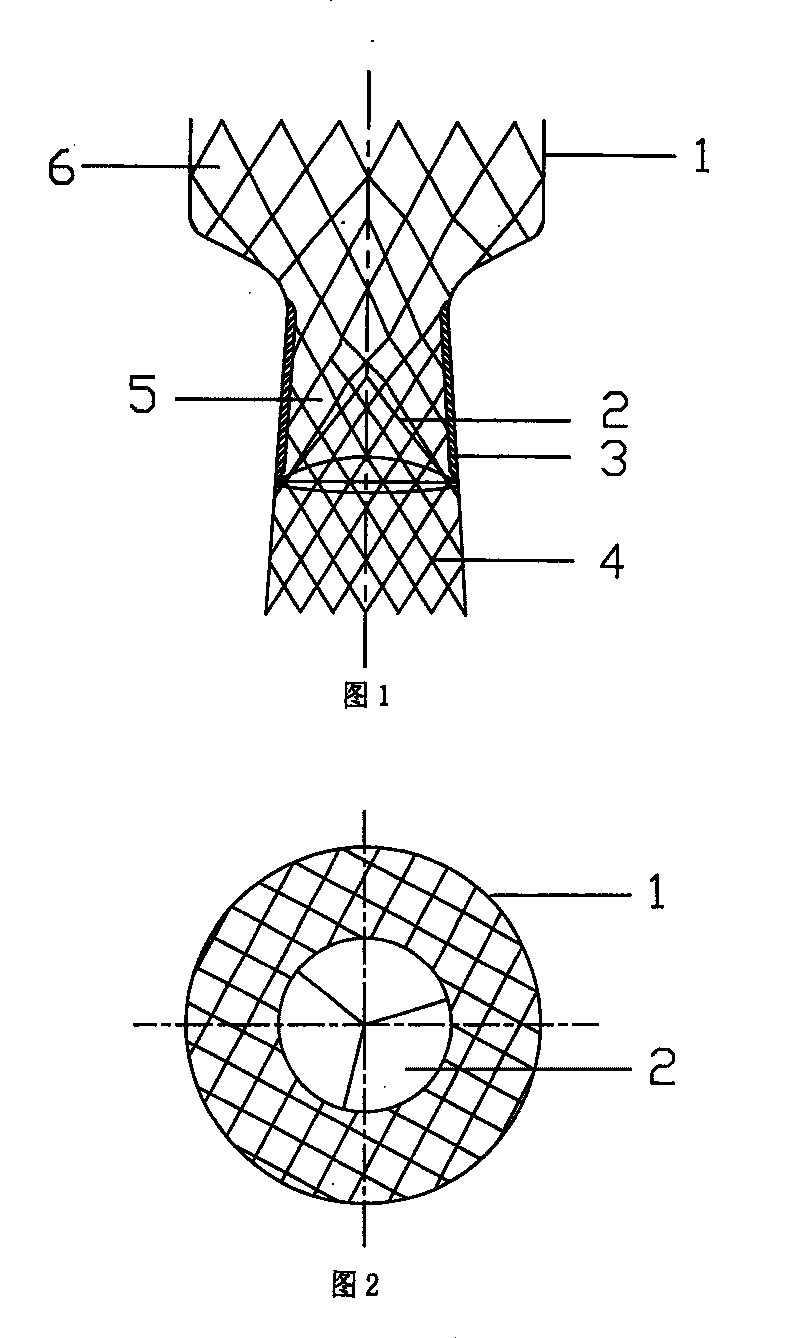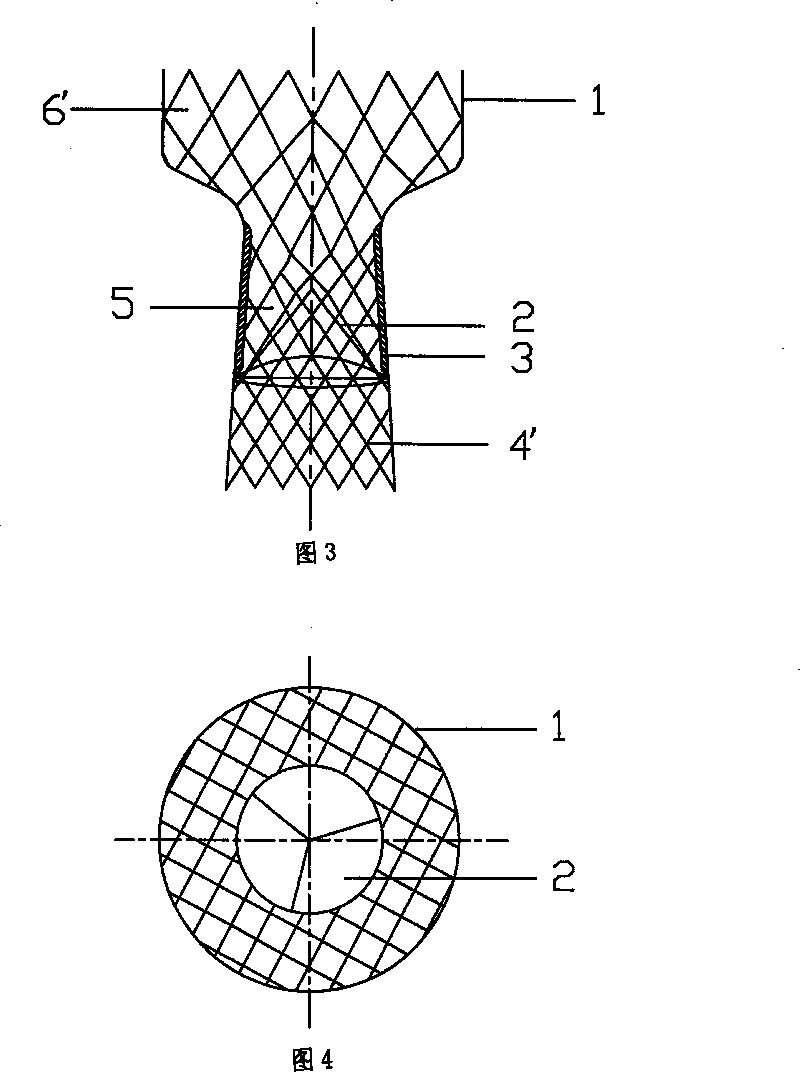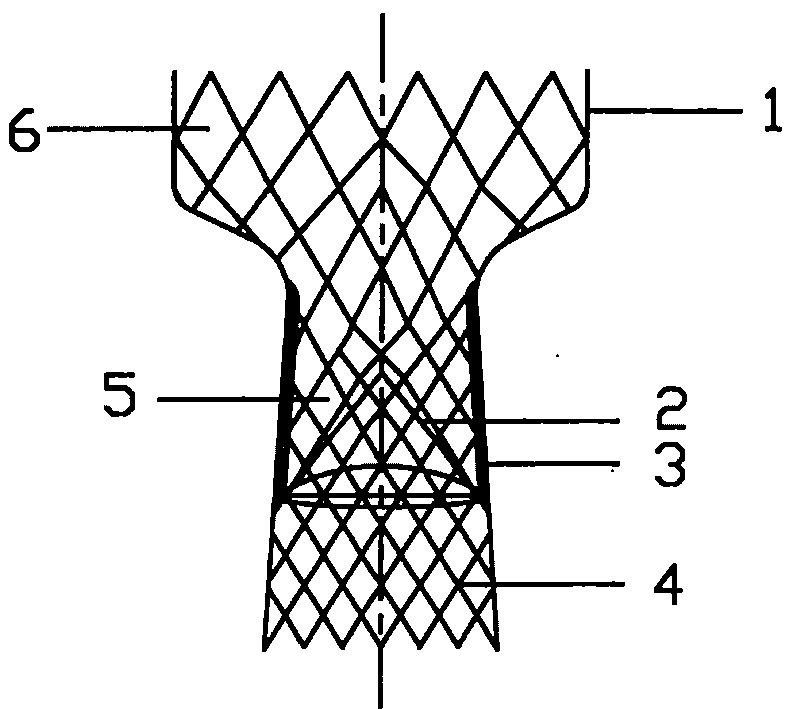Device for replacing aortic valve membrane or pulmonary valve membrane percutaneously
A technology of aortic valve and pulmonary valve, applied in the field of medical devices, can solve the problems of high surgical risk, difficult suturing, inconvenient suturing of valves and stents, and achieve the effects of reducing surgical pain, prolonging life, and reducing medical expenses
- Summary
- Abstract
- Description
- Claims
- Application Information
AI Technical Summary
Problems solved by technology
Method used
Image
Examples
Embodiment 1
[0036] Such as figure 1 , 2 shown.
[0037]A percutaneous aortic valve replacement device, comprising a grid-like stent 1 braided by nickel-titanium alloy wire, a three-leaflet valve 2, and the three-leaflet valve 2 is composed of porcine pericardium that has undergone anti-calcification treatment, and the three-leaflet unidirectional opening The valve is sewn, and it is fixed in the stent 1 through the polytetrafluoroethylene membrane 3 that is connected with the stent 1 in the circumferential direction. 4. One end of the aortic stent 6 is a bottomless structure that is convenient for supplying blood to the aorta. The other end of the outflow tract stent 4 is a bottomless structure that facilitates the inflow of left ventricular blood, and the diameter of the bottomless structure end of the aortic stent 6 is greater than the bottomless structure end of the left ventricular outflow tract stent 4 and the diameter of the valve support 5 , the polytetrafluoroethylene film 3 is...
Embodiment 2
[0045] Such as image 3 , 4 shown.
[0046] A percutaneous pulmonary valve replacement device, comprising a grid-like stent 1 braided by nickel-titanium alloy wire, a trilobate valve 2, and the trilobate valve 2 is fixed in the stent 1 through a membrane 3 connected to the stent 1 in the circumferential direction, It is characterized in that the stent 1 is composed of a pulmonary artery stent 6', a valve stent 5, and a right ventricular outflow tract stent 4' that are connected to each other and connected in sequence. One end of the pulmonary artery stent 6' is a bottomless structure that facilitates blood supply to the pulmonary artery. The other end is connected to one end of the valve support 5, and the other end of the valve support 5 is connected to one end of the right ventricle outflow tract support 4', and the other end of the right ventricle outflow tract support 4' is a bottomless structure that is convenient for right ventricular blood to flow in, The diameter of ...
PUM
 Login to View More
Login to View More Abstract
Description
Claims
Application Information
 Login to View More
Login to View More - R&D
- Intellectual Property
- Life Sciences
- Materials
- Tech Scout
- Unparalleled Data Quality
- Higher Quality Content
- 60% Fewer Hallucinations
Browse by: Latest US Patents, China's latest patents, Technical Efficacy Thesaurus, Application Domain, Technology Topic, Popular Technical Reports.
© 2025 PatSnap. All rights reserved.Legal|Privacy policy|Modern Slavery Act Transparency Statement|Sitemap|About US| Contact US: help@patsnap.com



